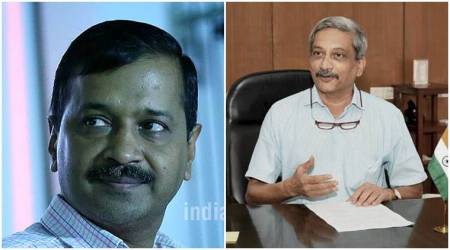 The new tariff schedule, which will come into effect from September 1, will see an increase of Rs 5-75 only in the fixed charges for consumers with 3-5 kW connections. (Representational)
The new tariff schedule, which will come into effect from September 1, will see an increase of Rs 5-75 only in the fixed charges for consumers with 3-5 kW connections. (Representational)
For the third consecutive year, the Delhi Electricity Regulatory Commission (DERC) has not hiked power tariff in the city. The AAP, for whom this has been a key electoral issue, congratulated themselves while discoms fumed and the opposition hit out at the government.
The new tariff schedule, which will come into effect from September 1, will see an increase of Rs 5-75 only in the fixed charges for consumers with 3-5 kW connections. DERC member B P Singh said, “Earlier, all consumers with a sanctioned load of above 3 kW had to pay a fixed rate of Rs 100.”
However, Singh added that about half of Delhi’s population comprises domestic consumers, of whom 25 per cent have a sanctioned load of 2 kW or less. Only 15 per cent of consumers fall in the 3-5 kW category, and would be impacted by the hike. It will result in an increase of 0.14 to 1.13 per cent in their power bills, he said.
Meanwhile, the fixed charges for low-end domestic consumers with 1 kW connections has been reduced by Rs 20.
The Congress hit out over the increase in fixed charges — which will have to be paid by consumers irrespective of usage. Delhi Congress chief Ajay Maken said, “It is shocking that instead of abolishing the fixed tariff, it has been increased. The only logic is to cover the fixed cost of services from consumers whose consumption is below a fixed level. But after 15 years of privatisation and massive increase in consumption, the fixed charge has been increased.”
But Deputy CM Manish Sisodia maintained that this was an achievement for the government. He said, “In the past three years after the AAP government came to power in Delhi, first the power tariffs went down by half and then it hasn’t increased. Wherever there is BJP government, the first thing they do is increase power… For the past three years, we have maintained that power tariffs are increased artificially. We are happy that tariffs haven’t been increased.”
But with the last tariff revision of five per cent taking place July 2014, power experts said Delhi’s total revenue gap (regulatory assets) — owed to the three discoms, including BSES companies BRPL and BYPL and Tata Power Delhi Distribution Limited (TPDDL) — is over Rs 34,000 crore till 2015-2016. “The expected revenue gap on a standalone basis for 2017-18 of the BSES discoms is around Rs 1,600 crore,” they said.
Apart from this, Singh said they have also decided that those who “run small-scale commercial establishments from their homes and have a sanctioned load of up to 5 kW will be treated as domestic consumers”. Previously, this only applied to those who resided in JJ clusters and consumed up to 400 units per month. He added that a separate tariff category has been “created for charging stations of e-rickshaws and e-vehicles with a flat rate of Rs 5.50 per kWh” to “promote pollution-free transport”.
Moreover, now, the DERC has also made a provision of payment of electricity bills of up to Rs 50,000 in cash at scheduled commercial banks, while retaining the previous limit of Rs 4,000 for cash deposits at DISCOM counters.
Singh added that they have also accepted the government’s recommendation for funding the amount for the Rs 694 crore for the Pension trust, through a a surcharge of Rs 3.7 per cent payable by the consumers and described it as a “negotiable pension surcharge”, which will provide “pension to thousands of people”.

